Homemade Chicken Tenders: Temps for Success
Chicken is about the hottest food going these days. The “chicken wars” have spawned dozens of new chicken restaurants where patrons can pay good money for a sandwich or maybe some tenders. And by good money, of course, we mean too much money. Chicken isn’t free, but it’s not that expensive, either, and you can make perfectly good breaded hen at home. So with that in mind, we bring you this post on the critical temps, and a knock-out recipe, for chicken tenders that you can make at home. You’ll easily get twice as many for the price you pay at any of the new poultry places, and you’ll have more control over how it tastes. Let’s get cooking!
First, meat: what are tenders?
Chicken tenders are a delicious meal, obviously, but what are they exactly? What meat should you buy to make them? To be “authentic” (you know, authentic American chicken tenders) you should use, well, chicken tenders. There is an actual muscle on the bird called the tender, lying underneath the breast atop the rib cage. It’s like a mini version of the breast, with a thick end that tapers to a point at the other side. It is exceedingly tender, hence the name, but has the drawback of having a small sinew at the thick end. If you don’t remove that sinew, it can be a chewy, unpleasant surprise at the end of your otherwise decadent snack. If you get tenders, use a small sharp knife to cut the sinew out.
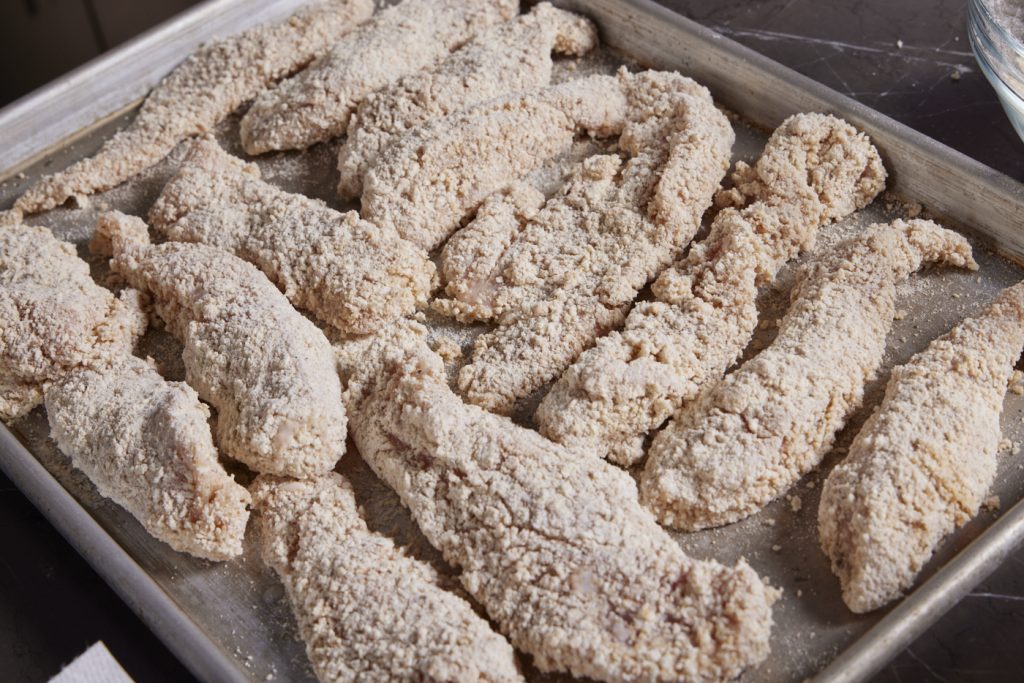
However, if you can’t source chicken tenders (they are not always readily available), you can use boneless, skinless breasts that are cut into three-ish strips, mimicking the tender itself. If you want to be persnickety about it, you could argue that these would be chicken strips, not chicken tenders. But your mouth won’t recognize the difference much once it tastes them. In this case, we couldn’t locate tenders the day we were cooking, so we used breasts cut into strips.
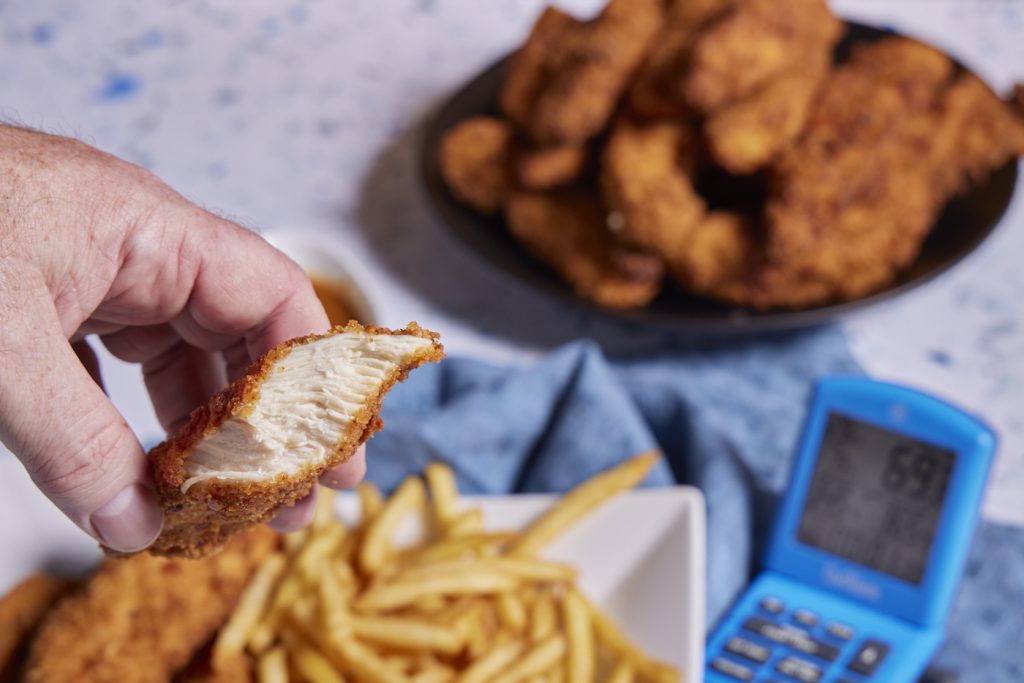
Chicken tender temps: frying and doneness
Breaded tenders present us with the age-old problem of balancing chicken-cooking times with breading-browning times. In this case, where we have a small piece of chicken that doesn’t take very long to cook through, we can bump the heat up a little bit to get nice browning on the bread. We cooked these tenders at 365°F (185°C). Use your ChefAlarm with its included probe and pot clip to monitor the oil’s temperature, setting the high-temp alarm for 365°F (185°C) and the low-temp alarm for 345°F (174°C), then adjust your stove heat to accommodate the changing oil temps.
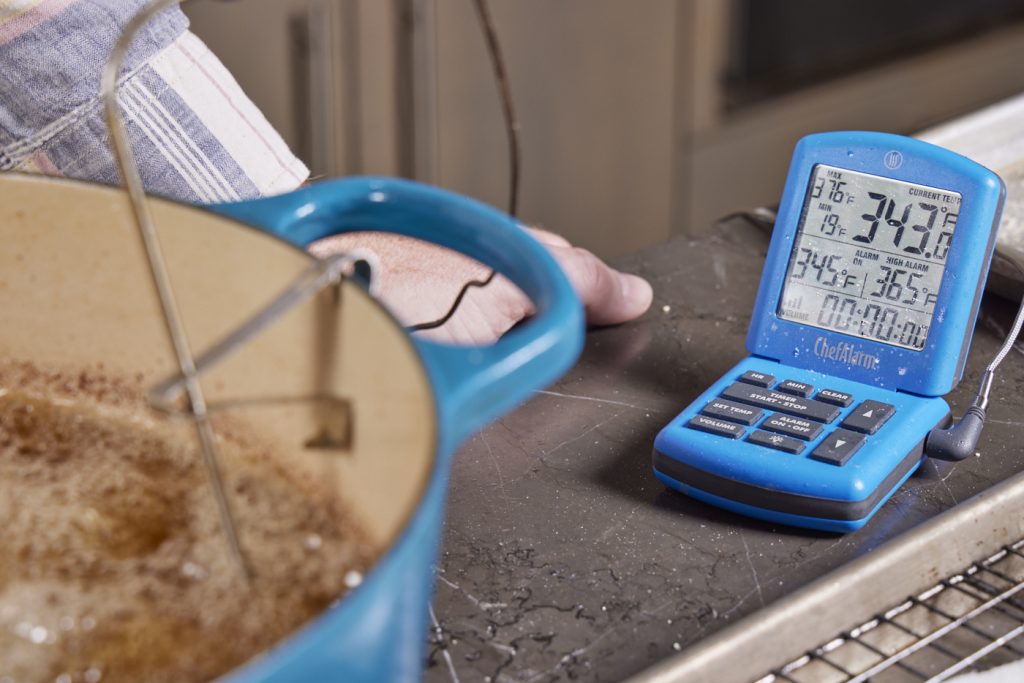
As for the chicken doneness, you can’t rely on the color of the breading! You need to temp the tenders as they cook, preferably checking each one with your Thermapen ONE before removing it from the hot oil. The target temp we’re shooting for is 158°F (70°C)—at that temperature it takes 21.9 seconds for the same bacterial kill-off as you’d get at 165°F (74°C), but the chicken will be that much juicier! As the chicken browns, check it in the thickest part, looking for the lowest internal temperature you can find. Once you don’t find anything below the target, take it out of the oil.
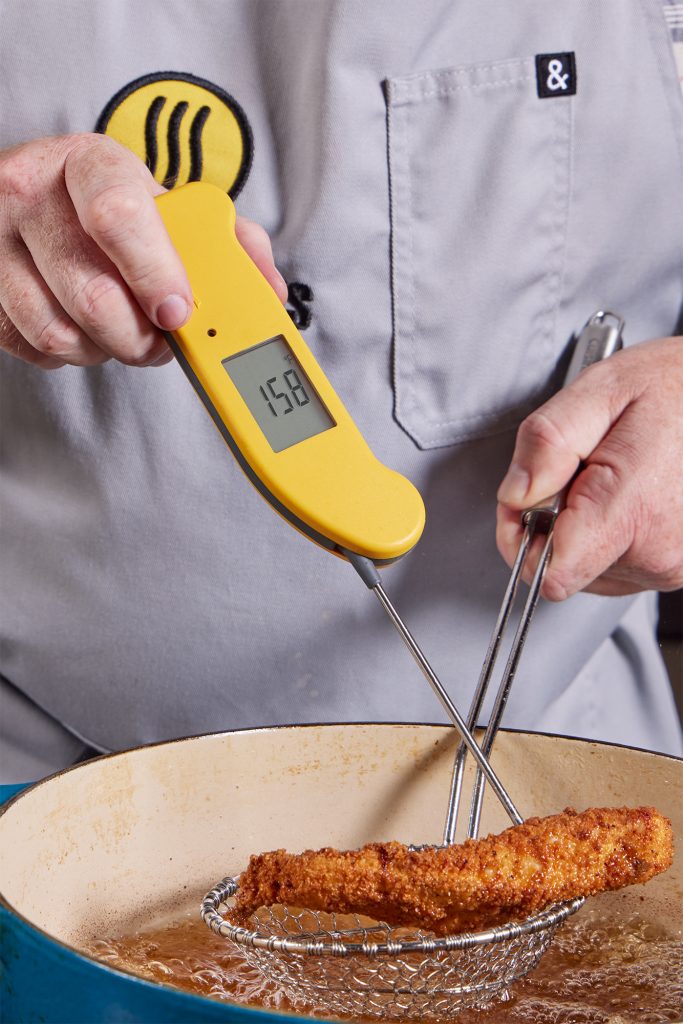
Make these this weekend (or even tonight) and see how easy it is. With the temperature control you get from ChefAlarm and the surety you get from Thermapen ONE, delicious homemade chicken tenders are yours for the making. Tweak the recipe how you see fit! Add more pepper, more cayenne, throw in a tablespoon of curry powder, or use homemade breadcrumbs from your favorite loaf. Then make your favorite sauce however you like it 2 and eat yourself silly for the cost of just a few strips at the restaurants. That’s what I call happy cooking.
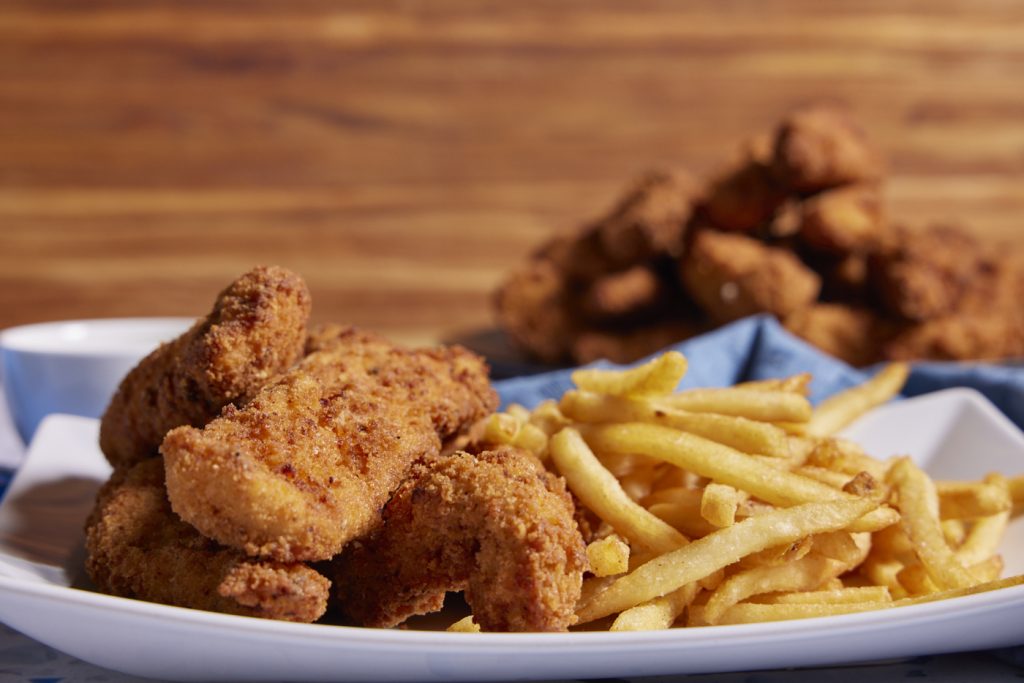

Homemade Chicken Tenders Recipe
Description
Chicken tenders, adapted from a recipe at Butter With a Side of Bread.
Ingredients
For the chicken and marinade:
- 12 chicken tenders (or 4 boneless, skinless chicken breasts, each sliced into about 3 strips)
- 1 1/2 C buttermilk
- 1 Tbsp cornstarch
- 1 1/2 tsp sugar
- 2 Tbsp Frank’s Red Hot or other hot sauce
- 1/2 tsp ground black pepper
For the breading:
- 3/4 C panko breadcrumbs
- 3/4 C regular breadcrumbs
- 3/4 C all-purpose flour
- 1 1/2 Tbsp onion powder
- 2 tsp granulated garlic
- 1/2 tsp cayenne pepper
- 1 1/2 tsp salt
- 1 tsp ground black pepper
- 4 C shortening or high-smoke point oil
Instructions
- Mix the ingredients for the marinade in a bowl by whisking together.
- Add the chicken to the marinade, mix to coat all the meat, and allow to marinate for 20–40 minutes.
- Meanwhile, make the breading by combining all the breading ingredients in a wide bowl or shallow dish.
- Also meanwhile, start preheating the oil in a large, heavy pot. Set up your ChefAlarm probe using the pot clip and set the high-temp alarm for 365°F (185°C) and the low-temp alarm for 345°C (174°C).
- Bread the strips one at a time by taking them from the marinade, dripping off the excess, and placing them in the bowl with the breading. Turn and cover them with the breading and set aside.
- Once the strips are breaded and the oil is hot, start cooking. Place 3–5 strips in the oil at a time and cook, watching the oil temperature and adjusting the heat accordingly, for about 3–5 minutes.
- As they start to brown, check their internal temperature with your Thermapen ONE, looking for a lowest temperature no lower than 158°F (70°C).
- As the strips finish cooking, remove them to a paper towel-lined cooking sheet to drain.
- Cook the next batch, allowing the oil temperature to recoup before adding more strips. Repeat until all the tenders are cooked.
- Serve!


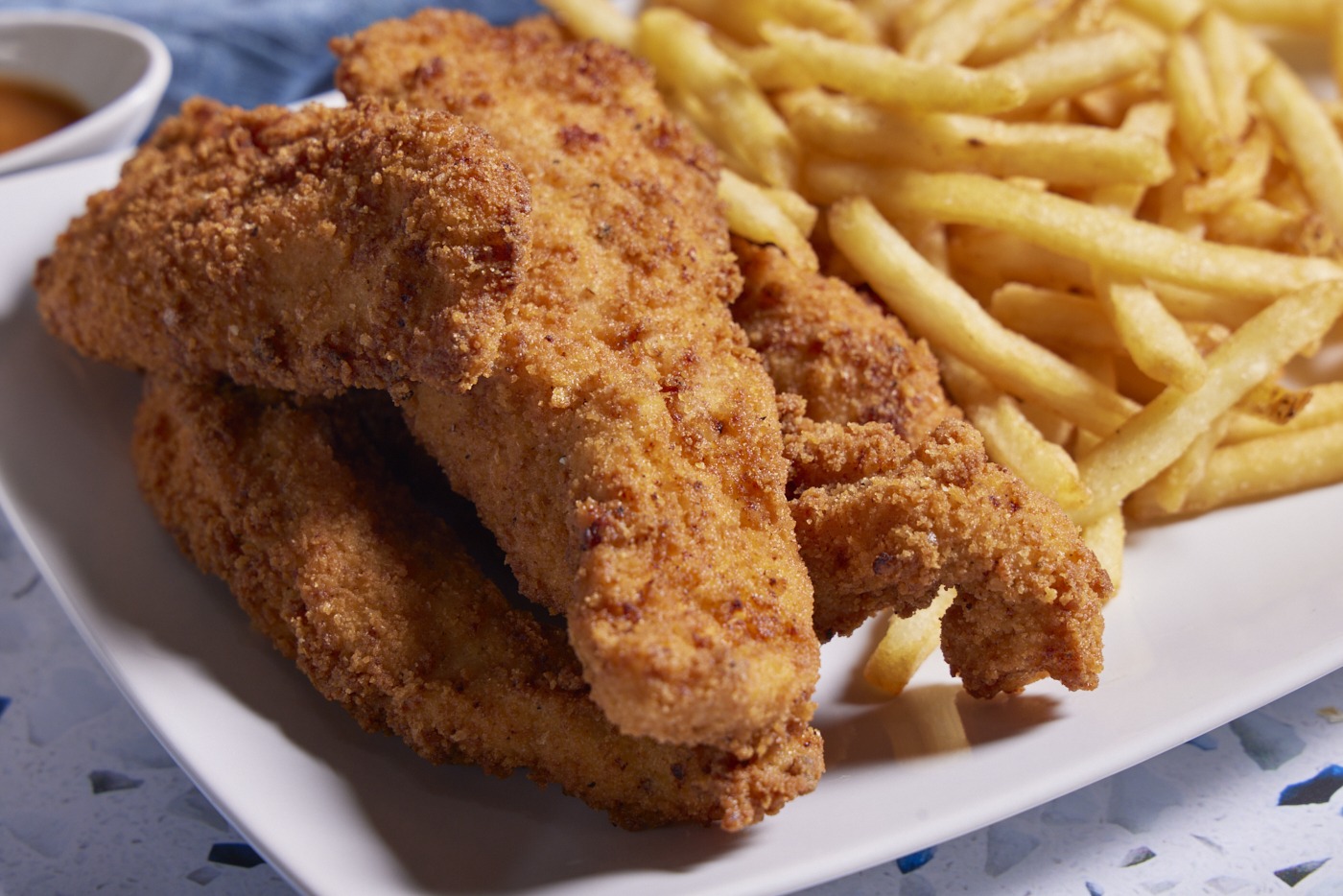
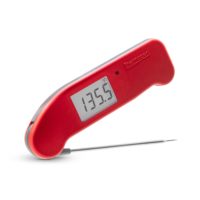
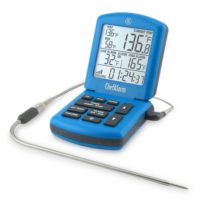
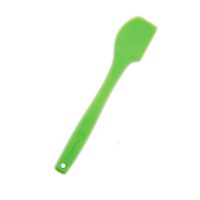
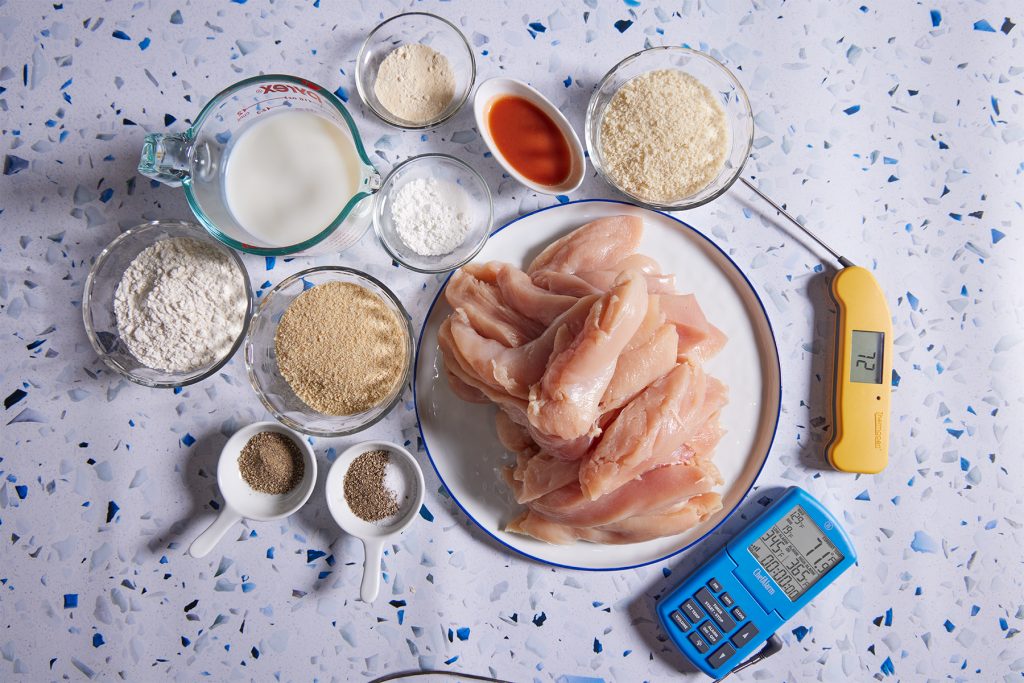
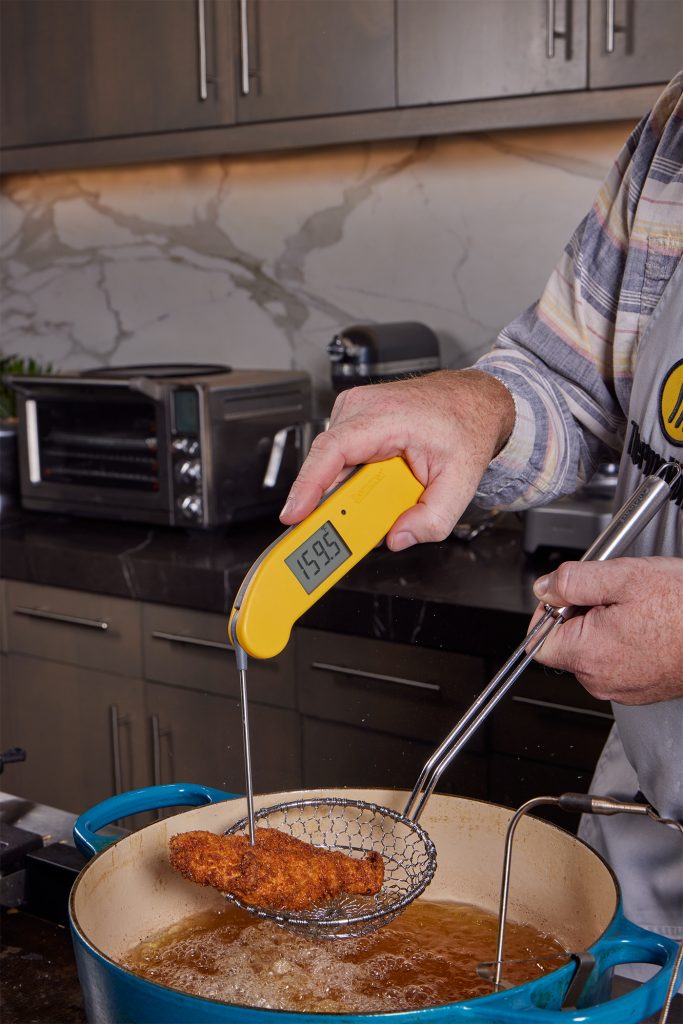
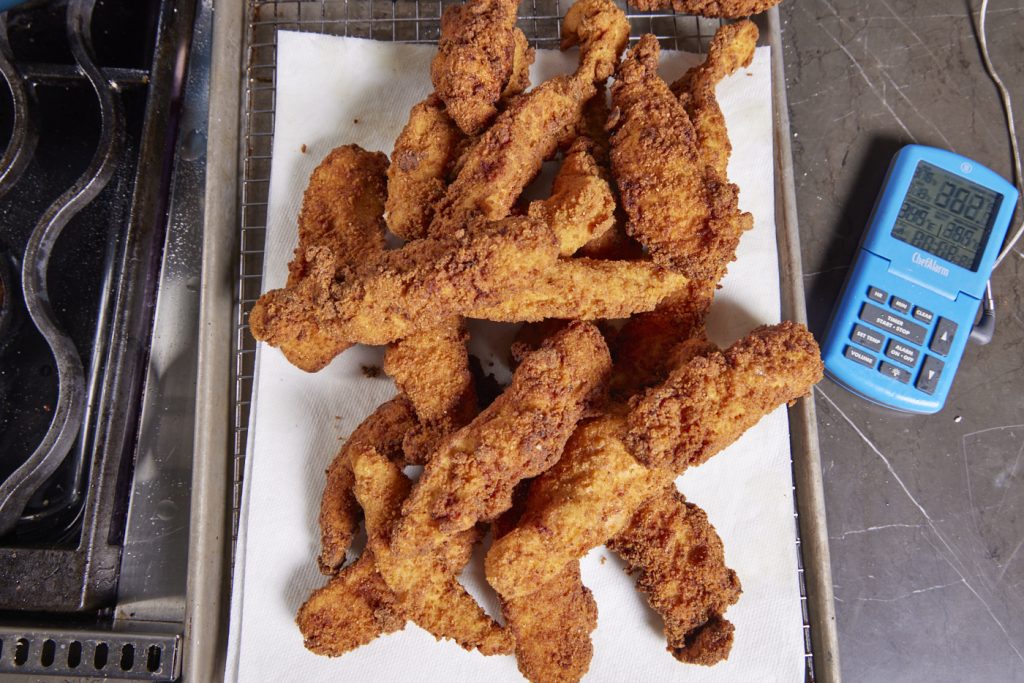
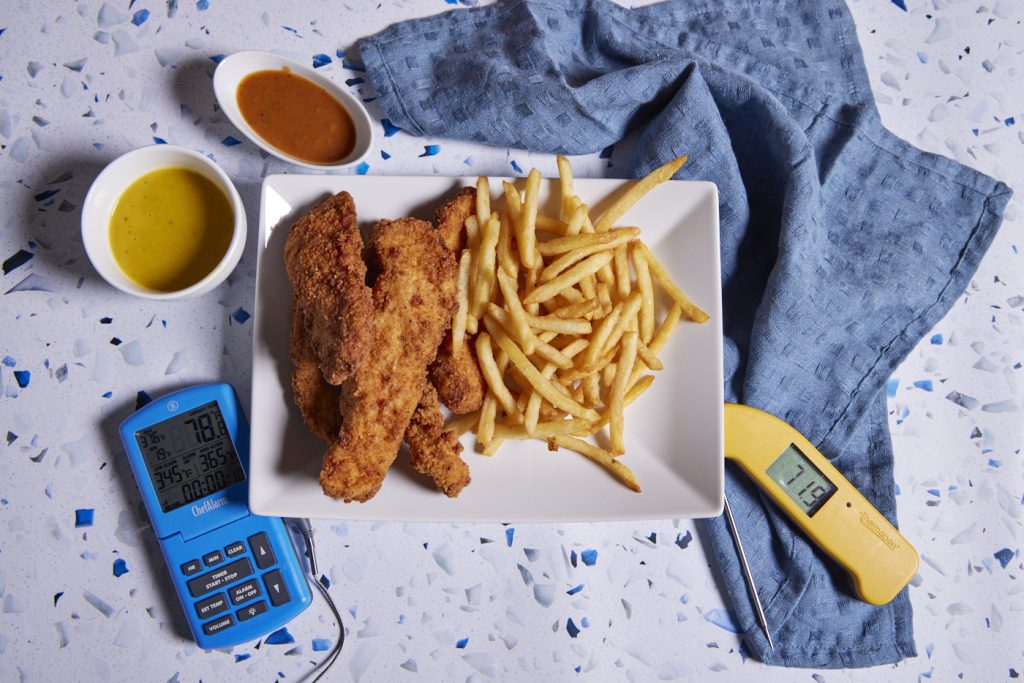
Chicken “tenders” always have a tough, chewy membrane that separates the “tender” from the main breast meat. I strongly recommend removing said membrane before going any further. Cooking won’t tenderize the membrane that otherwise becomes almost inedible. In fact, it becomes even tougher with cooking. It’s somewhat akin to chewing a rubber elastic band. A minute or two with a small, sharp knife will make all the difference.
Can you freeze these? Before cooking or after?
I’d freeze them before cooking.
I’ve always wondered what the actual difference between chicken strips and chicken tenders is! It’s amazing how subtle but important the distinctions are—chicken tenders come from a specific muscle, while strips can be cut from any part of the chicken breast. No wonder the texture can feel different. Anyone have a preference for how they like to cook or season them?